May 23, 2025 | 06:10 GMT +7
May 23, 2025 | 06:10 GMT +7
Hotline: 0913.378.918
May 23, 2025 | 06:10 GMT +7
Hotline: 0913.378.918
Thousands of dikes, irrigation works, and rural clean water works have been damaged, both in "hardware" and "software" by super typhoon Yagi (typhoon No. 3). The entire irrigation, dike management, and disaster prevention sector is at the peak of "sleepless nights" to overcome the severe consequences of floods.
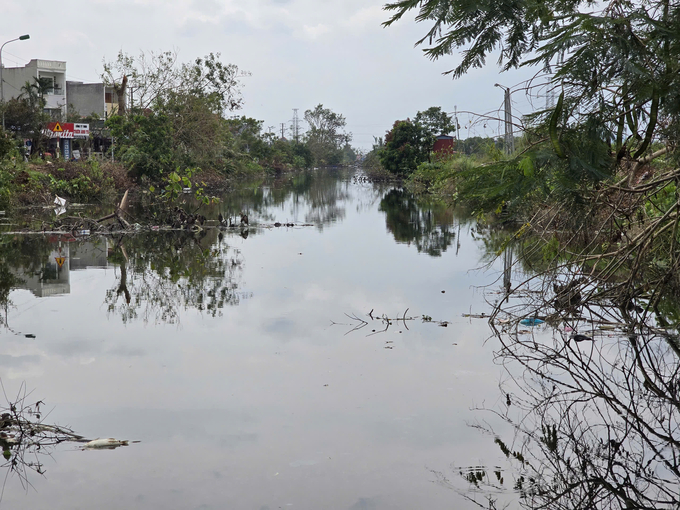
A canal changed color after the storm in Dong Thai commune, An Duong district. Photo: Dinh Muoi.
Heavy rain for many days has caused flooding in many areas due to the effect of Typhoon No. 3 (Yagi). Water sources from everywhere have brought black, foul-smelling wastewater into the irrigation system in Hai Phong city.
In Dong Thai commune, An Duong district, along An Kim Hai canal (a part of An Hai irrigation system), the water source is normally clean enough for fish and shrimp to swim freely, and people live crowdedly on both sides. However, after nearly a week of the storm, the water gradually turned pitch black, emitting a smell so foul many households did not dare to open the doors, and passersby had to cover their noses and frown.
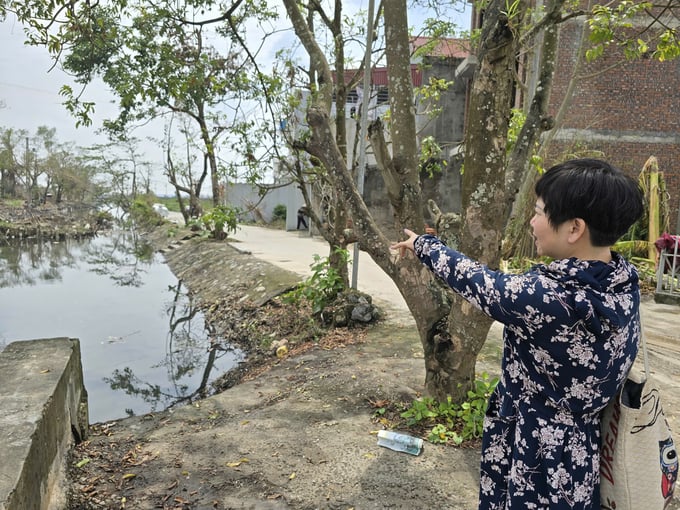
People are miserable living next to a dirty, smelly canal during the days after the storm. Photo: Dinh Muoi.
According to the locals, after the storm, almost all rice fields and crops were flooded. When the trees began to rot and the water receded, it was time the water source became polluted and turned black. Even waste from some livestock farms, and landfills also flowed into irrigation canals.
As for the canals along the commune's main road specifically the area of yellow sticky rice fields, the water source was heavily polluted. The pollution in the canal systems post-typhoon not only occurred in An Duong, Tien Lang, and Kien An but actually in most localities, while the new water source from outside for washing did not come in time.
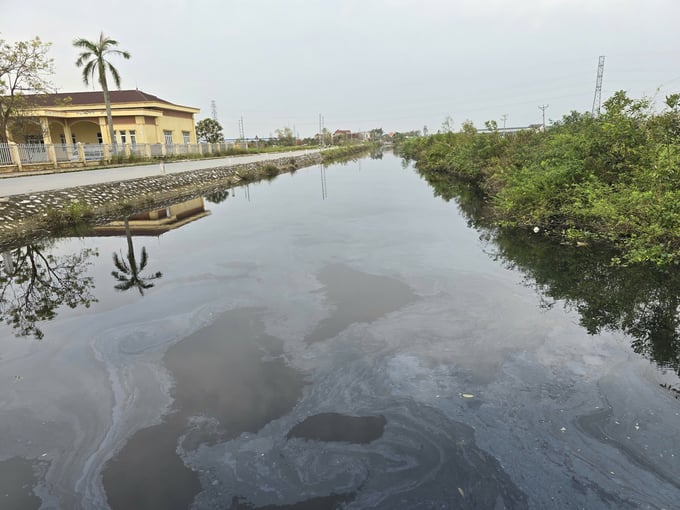
The once clear canal in Dai Thang commune, Tien Lang district has changed color and has a foul smell. Photo: Dinh Muoi.
Super typhoon No. 3 with terrible force swept through, causing more than 25,000 ha of rice, more than 3,300 ha of vegetables, and nearly 1.9 million flowers and ornamental plants in Hai Phong to be damaged, most of which were due to flooding. This situation rarely occurs in the port city, leaving many companies operating irrigation works in shock before, during and after the storm.
According to Nguyen Tri Dung, Chairman of Tien Lang Exploiting Irrigation One Member Company Limited, drainage in some localities remains difficult, particularly in communes in the north of the Moi river such as Dai Thang, Tien Cuong, and Tu Cuong.
Communes in the south of the Moi river have now removed sewers and turned over water sources, so the pollution situation has been somewhat limited. The most difficult problem is that fruits and trees are starting to rot, and residential areas still discharge domestic water into the water sources. Hence, pollution and bad odors are still common.
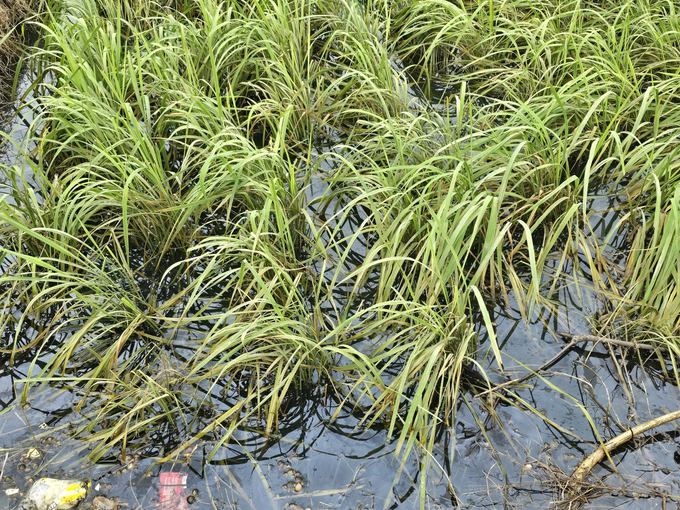
Golden sticky rice flowers soaked up black water. Photo: Dinh Muoi.
Regarding the current status of the An Hai irrigation system, Nguyen Thi Bich Diep, Deputy General Director of An Hai Exploiting Irrigation One Member Company Limited said, “In An Duong district, the storm damaged more than 1,500 ha of rice, 715 ha of vegetables, and 580 ha of ornamental plants. The company has actively drained wastewater but encountered difficulties because Hai Duong still had to pump and drain. The two additional water sources from Kim Son and Tinh Thuy also met certain obstacles, so water could not be collected”.
Irrigation works in Hai Phong city are divided into six completely independent systems as the city is separated by six rivers which are tributaries of the Thai Binh river system. The irrigation systems are responsible for draining water for 100,000 ha, supplying irrigation water for 58,253 ha of cultivated land.
The irrigation systems supply water for urban living, rural areas, industrial zones and 213 clean water producers with a raw water volume of over 90 million m3 per year. They have been invested for a long time and some parts of the systems have degraded, causing water regulation and drainage to experience limitations.
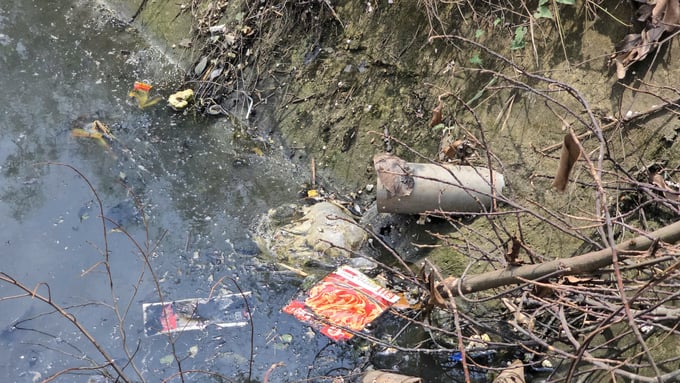
Wastewater and garbage surround irrigation canals. Photo: Dinh Muoi.
For example, in the Da Do irrigation system, on the riverbank, there are currently more than 100 intersections. To be more specific, 40 culverts have been newly invested in, 24 old culverts are degraded, 13 works are concrete culverts or box culverts discharging domestic wastewater, cemetery wastewater. There are currently 63 locations without regulating works, and all types of waste sources in the system are still discharging directly into the Da Do river.
“Normally, the company strictly controls and monitors the discharge points in the system, especially at three locations: Kien An, Cau Nguyet and Kien Thuy - residential areas close to the riverbank that are discharging great amount of waste into Da Do river. These three locations may have a high risk of polluting the water quality in the system,” said Do Van Trai, Chairman of Da Do Exploiting Irrigation One Member Company Limited.
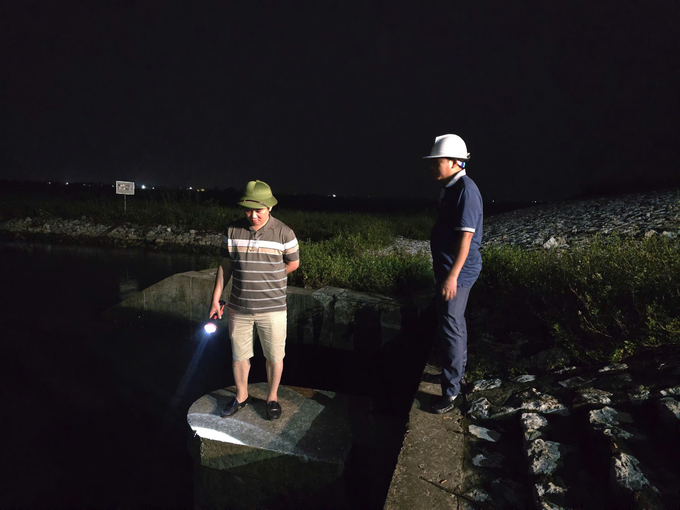
Do Van Trai, Chairman of Da Do Exploiting Irrigation One Member Company Limited, uses a light to check the drainage in Kien Quoc commune, Kien Thuy district. Photo: Dinh Muoi.
During Typhoon No. 3, the company had been working day and night to drain the water at full capacity, but due to heavy rain, the drained water was replenished immediately. Due to power outages, manual operations took time, and the sewer system had deteriorated, making it difficult to meet the requirements of the new situation when natural disasters occurred at increasingly severe levels and higher intensities.
“We were on duty 24/7 for 10 days, all 400 officers and employees were mobilized to carry out the task of draining water and preventing natural disasters. The drainage culverts were operating at full capacity but in reality, they could not drain fast enough, so flooding still occurred,” said Trai.

Some irrigation works in Hai Phong have degraded and are unable to meet the demands of increasingly complex natural disasters. Photo: Dinh Muoi.
Hai Phong currently has 387 culverts under the dike, of which 122 are unsafe and 55 are in critical condition. Apart from some key culverts, most of the remaining culverts are small culverts with an aperture of less than 5 m. The culverts assessed as critical were all built in the 1960s and 1970s, and many have now been damaged. These projects need to be invested in a prompt manner to ensure the safety of irrigation works, protect production and ensure natural disaster prevention.
Translated by Samuel Pham
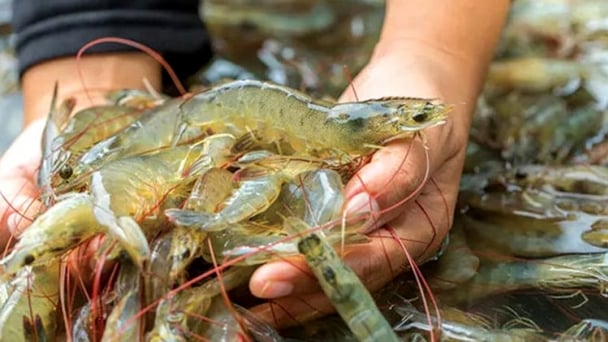
(VAN) A study assessing the carbon footprint of whiteleg shrimp farming in China shows the potential for carbon emission reduction through the use of renewable energy.
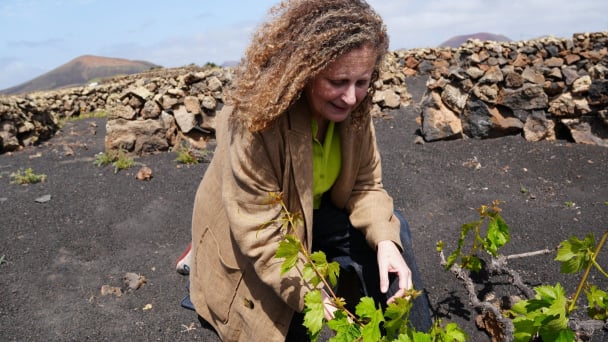
(VAN) Brazil, China, Mexico and Spain receive new designations of Globally Important Agricultural Heritage Systems from FAO.
![Reducing emissions from rice fields: [3] New values generated from carbon credit](https://t.ex-cdn.com/nongnghiepmoitruong.vn/608w/files/content/2025/05/19/dsc09613-144700_71-150957.jpg)
(VAN) In addition to helping safeguard the environment, the low-emission rice cultivation model also generates new opportunities for farmers by leveraging the carbon credit market.
![Ho Chi Minh city adapts to climate change: [1] Vulnerable in the whirlwind of development](https://t.ex-cdn.com/nongnghiepmoitruong.vn/608w/files/duyenht92/2025/05/19/3131-ngap-nongnghiep-163121.jpg)
(VAN) As the country's economic engine with a rapid urbanization rate, Ho Chi Minh city is facing increasingly serious consequences of climate change.

(VAN) On May 21, Minister of Agriculture and Environment Do Duc Duy worked with Mr. Olivier Brochet, Ambassador Extraordinary and Plenipotentiary of the French Republic to Vietnam.
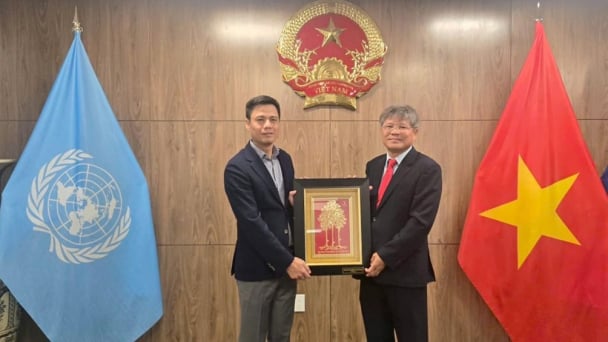
(VAN) VRG recently conducted a visit and working trip to the United States to demonstrate its efforts in redefining the role of rubber enterprises in the global value chain.
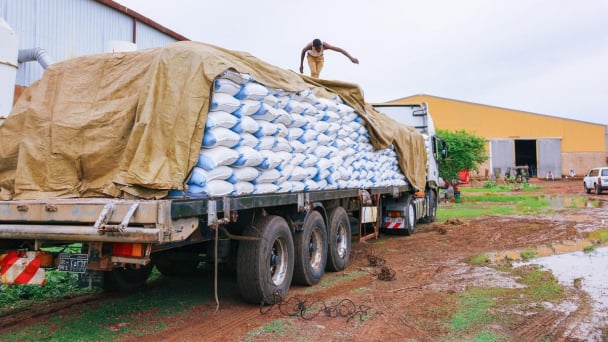
(VAN) In 2024, over 295 million people across 53 countries and territories faced acute hunger—an increase of almost 14 million people compared to 2023, while the number of people facing catastrophic levels of hunger reached a record high.